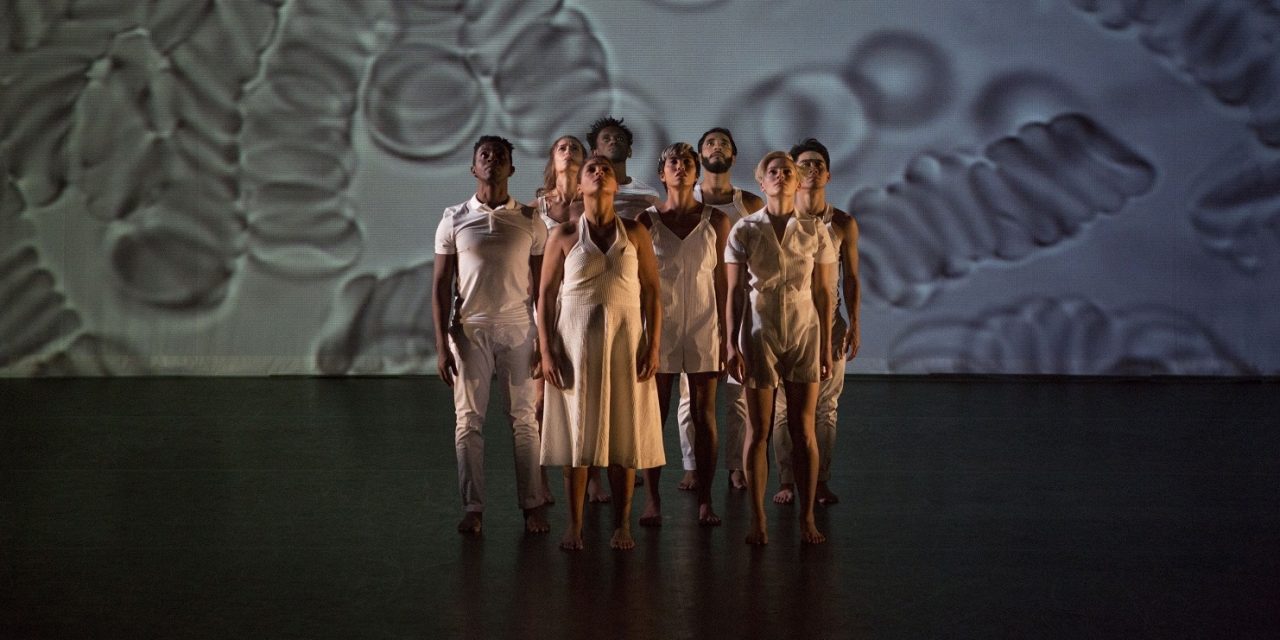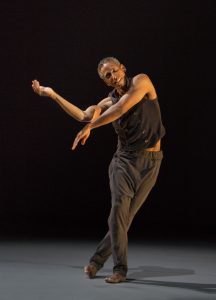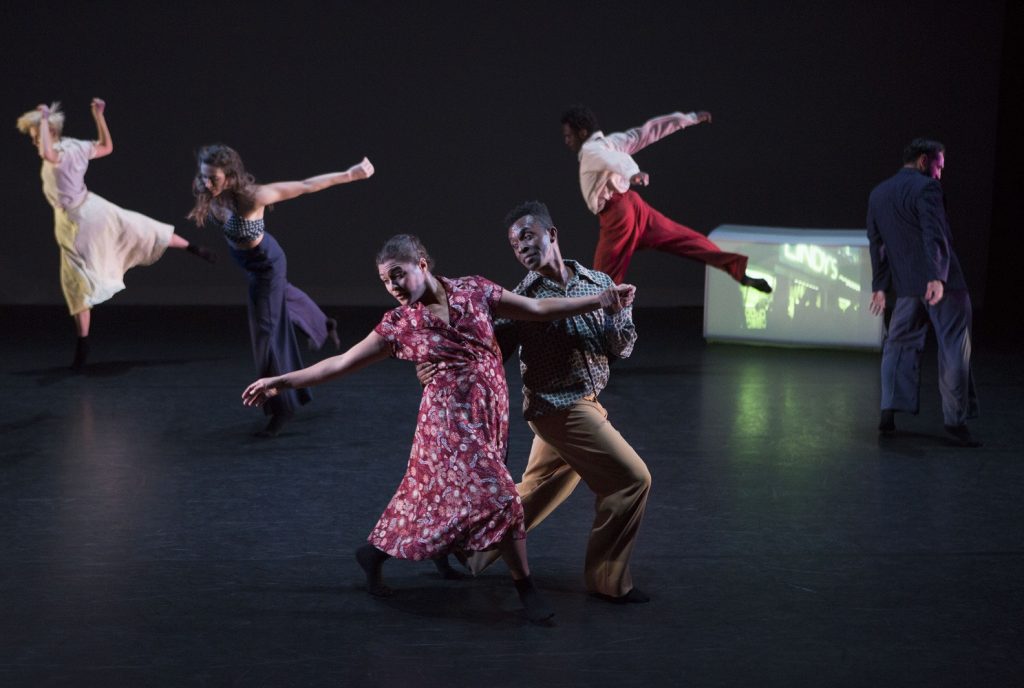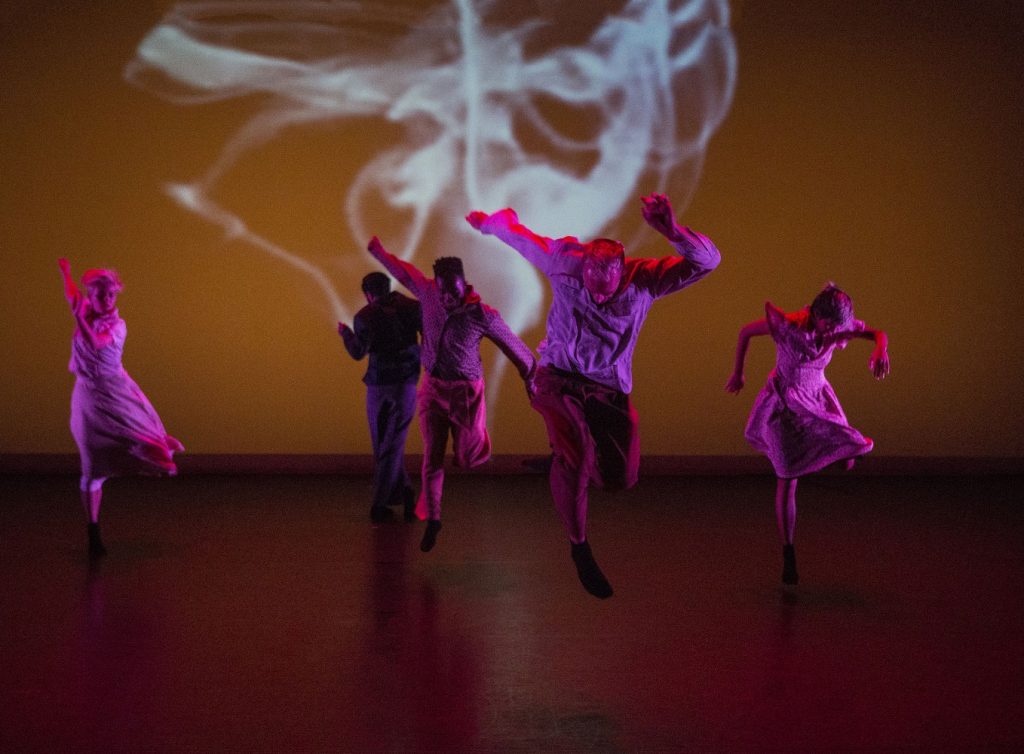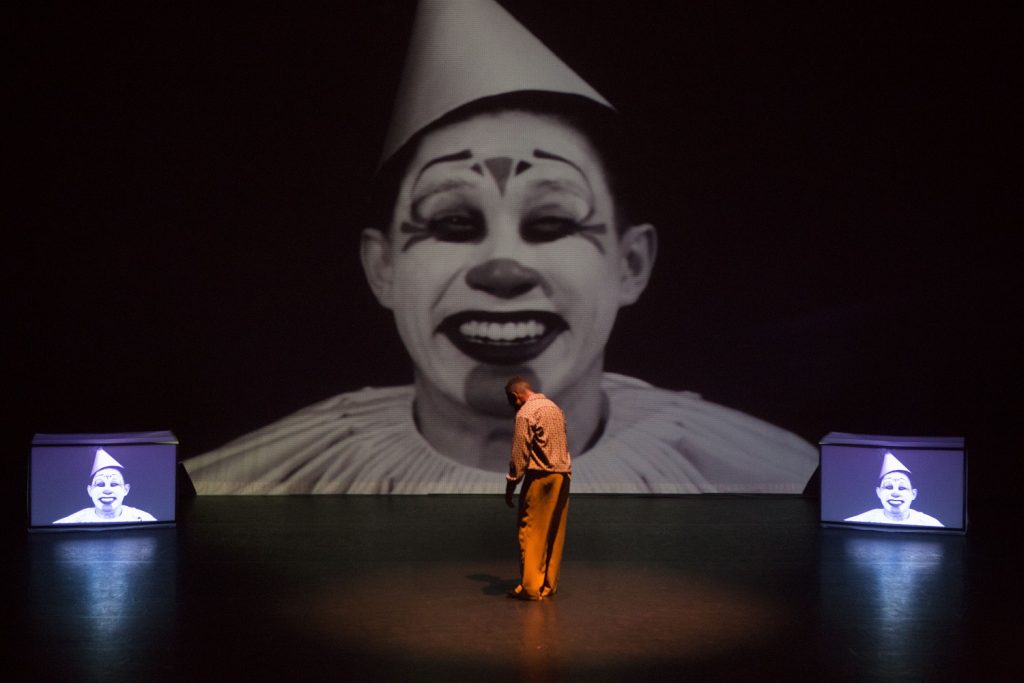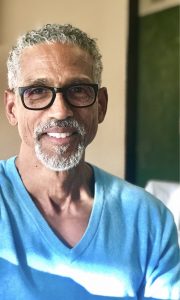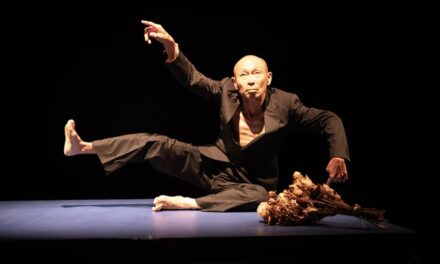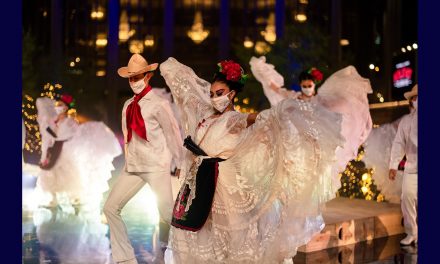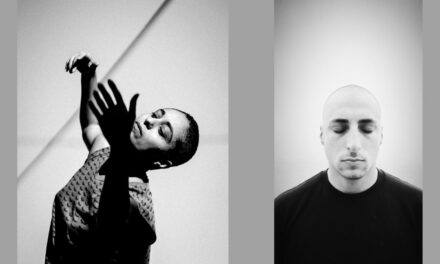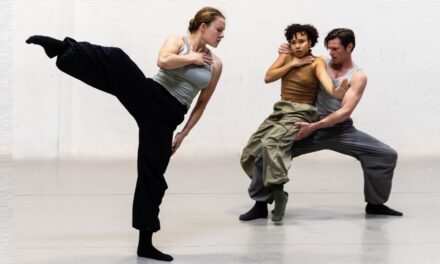“Lush Life”, “Take the ‘A’ Train”, “Chelsea Bridge”, “Satin Doll”—the titles are familiar and tell a story jazz enthusiast know well, especially those who are fans of Duke Ellington’s music. The question, however, is who that story belongs to. Billy Strayhorn is not a household name, though his music has been playing in homes across America for the past 80 years. Thanks to his quiet demeanor and a natural desire to stay behind-the-scenes, he let partner and orchestra frontman Ellington take credit for what he wrote for many years. Now, in a time when society is becoming conscious of creators’ rights, admirers such as choreographer David Roussève are giving Strayhorn the acknowledgment he deserves with pieces like Halfway to Dawn: his latest dance-theater show all about the man behind the music.
Premiering at the REDCAT on Thursday, October 4 and playing through Sunday, October 7 before it tours around the country, Halfway to Dawn goes beyond sharing biographical details about Strayhorn or facts about the creation of his greatest hits. In it, Roussève delves into the emotional undercurrents surrounding the events of Strayhorn’s life in order to explore the person whose work he fell in love with decades ago.
Roussève, like many others, had never heard of Strayhorn, despite having a father who was a jazz musician. He first encountered the jazz writer’s name after he was asked to work on Rose Colored Glasses—a 1959 musical Strayhorn and Broadway heavyweight Luther Henderson had never finished. Roussève’s piece never really took off but working on it had forever changed Roussève’s perspective on the practically unknown composer.
“I fell in love with Billy Strayhorn—his life and his music,” says Roussève. “It was about 2002 that Rose Colored Glasses came to an end and I said, ‘I’m going to come back to Billy Strayhorn one day, but just do a totally different thing and on my terms.’”
Roussève, whose company REALITY was founded in 1988, is known for avant-garde, post-modern mixed-media dancing. Many of his pieces, such as the acclaimed Stardust (2014), feature elements such as video projections and text slides that run the length of his productions, weaving together the many layers of imagery through one narrative story.
Halfway to Dawn will include all these same components but execute them in a different way. Much of the dancing within the piece will include more traditional 8-count steps as the ensemble incorporates jazz into their movements to Strayhorn’s music.
The characters will instead be more abstract, representing the transitioning moods within the composer’s life and the surrounding attitudes Strayhorn and those around him may have held in regard to his role within the jazz world.
One aspect that set him apart from many of his peers was the fact that he was an openly gay African American man living in Harlem during the 1940s and hosting parties and safe spaces for LGBT community members to gather. His public image was a strong contrast to his private attitude about his work and in no small way contributed to the reason why his name did not appear on many of the marquees announcing Ellington and His Orchestra. The juxtaposition between silent fame and living his principals out loud can be seen in Roussève’s staging of the piece.
The bulk of the dance-play takes place within the swanky, World War II–era Cotton Club where the company ensemble—Bernard Brown, Raymond Ejiofor, Dezaré Foster, Jasmine Jawato, Kevin Le, Julio Medina, Samantha Mohr, Kevin Williamson and Leanne Iacovetta Poirier—have gathered together to listen to music, dance and have a good time. As the night evolves, they deal with drunkenness, loneliness, a forced sense of fun, ensuing embarrassment and ego-filled moments, triggered by the emotions surrounding Strayhorn’s songs.
Group numbers and cyphers showcasing individual movements dominate the happier moments of the show, which are punctuated by fast rhythms, high strings and loud trumpets. Sadder, existential ones are marked by a general deflation heard in bellowing trombones and melancholic melodies. They result in many of the cast members lying down on the ground in defeat, lapsing into repetitive, pulsating moves performed with blank faces or obnoxious, fake smiles, and plenty of swaying slow dances to beautiful ballads expressing tragic longing.
“In Act I, it’s really structured; the role that I play is very clear. As the piece progresses, things start to get more muddled and disjointed…and fragmented,” says company member Poirier. “In a way, the movement represents a lifeline—birth to death. And at the beginning it’s very juvenile and playful and youthful and energetic. And then it starts to get fragmented and [we] start to become cynical…and the way [we] look at life is just scattered or different. [There’s] joy and anger and in between is that bittersweetness.”
Though Strayhorn’s notes help dictate the tone of each scene, the choreography also embodies the surrounding events that led him to both enjoy the success of his greater hits and suffer the consequences for his choice to remain uncredited for so long. Later in life, after Strayhorn had changed his mind about wanting to be billed for his work, his name was ignored, even after Ellington agreed to credit him on their newer albums such as A Drum is a Woman (1956) and Such Sweet Thunder (1957). Publications such as TIME magazine did exposés on the albums, which became resurgences in Ellington’s career, but Strayhorn was never mentioned once. His death from esophageal cancer in 1967 at the age of 51 due to heavy drinking and smoking may have been triggered by his dissatisfaction at having been the rejected author of the beloved music the public had decided he wouldn’t be a part of.
Adding a modern feel to Strayhorn’s songs is a sonic overlay by choreographer, writer and composer d. Sabela grimes. His continuous baseline of music can be heard as a narrative thread linking the many tracks Strayhorn wrote. Like the artist himself, grimes’ soundscape both sticks out on its own through echoey recordings and blends into the background as loud, synthetically created drum solos that sound as though they may have be a part of the original music. It’s experimental, much as Strayhorn himself was, and connects the classic pieces to our time, allowing the show to become the connection between the past and the present.
“[David] moving beyond a very linear narrative has helped me understand different approaches to creating this relationship between Billy Strayhorn’s music and the dancers and the dance itself,” says grimes. “David creates a space for me to dream sonically and create these scenes. David is really good at creating a scene and in that, the feeling tones, the colors and the textures of the scene. And then I just get a chance to really interpret that.”
But getting the rights to the music, even just to build upon it for the piece, was not easy. Thanks to the many years of abuse and exclusion from the jazz world, Strayhorn’s family created a strong foundation that tightly governs the licensing. Normally this would be any artistic director’s nightmare, but Roussève’s willingness to get to know them over the many years it has taken to make Halfway to Dawn come to life has led to his holding a different opinion.
“I got really positive feedback from them for the one showing they were at in New York for the musical and I think they clearly realized then that it wasn’t going to be status quo,” says Roussève. “Billy Strayhorn was anything, but status quo and my sense is that they appreciated that an original man would have an original telling of his story.”
The music and dancing lead the show, but Cari Ann Shim Sham’s video art overlays the piece with wrought symbolism that further develops many of the concepts theatrically touched upon within the show, while also adding further details about Strayhorn’s life into the mix. Hand-written text, which took over 80 hours of labor to complete, displays Strayhorn’s biography on a large screen that appears in the background, while two other projectors (fixed in Act I and handheld in Act II) show off additional images such as those of a ’40s clown seen in Act II, played by Kevin Le. The clown costume is physically worn on stage by Le as well, but the projections, which include plenty of slow motion of footage of him staring solemnly into the camera while his real-life counterpart purposely makes a fool of himself on stage, hints at Strayhorn’s inner turmoil as a performer. Especially as it is projected onto the dancers’ bodies with the handheld devices held up by other members of the ensemble.
“This clown figure was a metaphor for Strayhorn always appearing to be happy, putting on a costume, putting on a show,” says Shim Sham. “I’m so obsessed with slow motion right now, so I really wanted to see that shift between happy and sad. [Kevin]’s really the through-line of the piece, so the way I read the piece, he is the physical representation of Billy.”
Another thing seen in Shim Sham’s projections are plenty of imagery of Civil Rights protests from the ’60s. Strayhorn was passionately involved in the Movement and enjoyed a close friendship with Dr. King. This became an additional reason why Ellington and especially some of his publicists were willing to snub Strayhorn’s credit for his masterpieces. It’s also what helps make his later work, much of which was written with the Movement in mind, that much more prevalent today, as is Roussève’s timing for creating this dedication to him.
“He’s not the activist archetype that we usually are familiar with,” says grimes. “You read the social landscape and you decide how you can continue to do this sort of activist work that’s real, roll your sleeves, on the ground, grassroots activist work. [It’s] meaningful and at the same time you’re not ‘in the spotlight’ as very few people are anyway. Many…are in the background.”
The artists collaborating on Halfway to Dawn see this as an opportunity to give Strayhorn the recognition he deserves.
“It’s a real historical moment,” says Shim Sham. “Let the world have it and start healing because we need to talk about these things. This country needs to heal, and this is a step in that direction. [We need] to really talk about disparities between the blacks and whites and between everyone in this country and what we’re up against right now. We need to begin to be truthful about his situation.
“This has been percolating in my mind,” says Strayhorn of his decision to premiere Halfway to Dawn now. “And finally, it felt like this is the moment to go back to Billy Strayhorn!”
But Roussève’s reason for creating the show is also a personal one.
“There was something about Billy Strayhorn that I found really appealing in the bittersweetness of his life path,” says Roussève. “I’ve always obsessed with philosophical questions, and as I’ve gotten older, more so. Looking back on what you’ve done [is] at the core of Billy Strayhorn’s life. Is it [about] writing this amazing body of work? Is it being known for writing this amazing body of work? Is it that he lived his personal truth rather than having fame? His life raises all of these questions about the meaning of life. As I started thinking about [all of that], I think I curved right back to Billy Strayhorn.”
Though Roussève chose to name Halfway to Dawn for Strayhorn’s favorite time of day, it is also a metaphor for how he lived and died and what became of his legacy, though that may now hopefully begin to change with the production of shows such as this one. The feeling Strayhorn enjoyed and embodied is best represented by one of the text cards used to introduce the piece:
“Five, six in the morning we’d still be yappin’. That was his favorite time in the world. The phrase he’d use was ‘halfway to dawn’. It wasn’t day and it wasn’t night. You’re half asleep, you’re half awake, your resistance is gone. It’s like a truth serum. Your feelings just pour out.”
To learn more about David Roussève, click here.
To purchase tickets, click here.
Feature image: David Rousseve’s Halfway To Dawn – Photo: Rose

